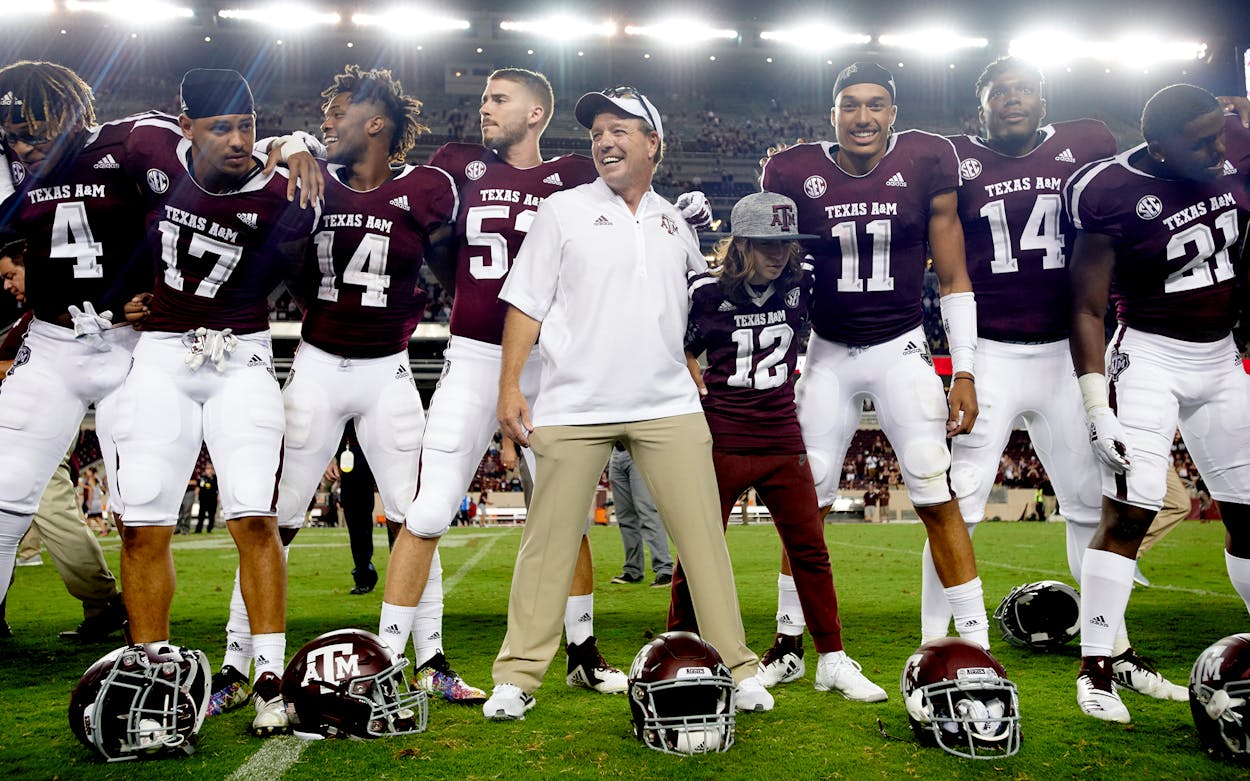Forbes released its annual ranking of college football’s most valuable programs on Tuesday, and there was a changing of the guard at the top: the University of Texas has been replaced by Texas A&M.
Though this is the first ranking from the magazine since 2015, UT has long been atop Forbes‘s list. According to the magazine, in 2011 the Longhorns became the first college football team ever to record $100 million in revenue. Three years later, the team turned $92 million in profit, which was more than all but two teams made that year in revenue alone.
A&M, meanwhile, has had a rapid ascension to the top. In 2014, the Aggies were just the thirteenth most valuable college football program, with a team value of $78 million and a revenue of $58 million. But according to Forbes, the Aggies averaged $107 million in profit and $148 million in revenue over the past three years. On average, that’s $20 million more in profit than UT made over the same time frame, and $15 million more in revenue.
But just because A&M has knocked off UT from the top spot doesn’t mean Bevo is out begging in the streets. The Longhorns rank in the top five in contributions, ticket sales, endowments, concessions, and youth camps. On top of that, UT gets $31 million from licensing, royalties, and advertising, which is 50 percent more than any other team makes from that revenue stream. That’s largely thanks to a roughly $10 million per year deal the athletic department has with Nike and a TV contract with ESPN for the Longhorn Network that runs through 2031.
A&M and UT are far and away the most valuable programs in the country. The third-richest program, Michigan, is very far behind, raking in just $127 million in revenue and $75 million in profit. There was only one other Texas team on the list: Texas Tech was Forbes‘ twenty-fifth most valuable program, with a revenue of $60 million and $31 million in profit.
A&M’s rise to the top is mostly due to a major increase in contributions to the athletic department. From 2014 through the 2016-17 season, the A&M athletic department brought in $260 million in contributions, which was almost twice as much as any other school made in the same time. A&M devoted $119 million of that money to its football program, Forbes reported. UT’s athletic department, meanwhile, brought in $123 million, and Florida, the next highest earner after A&M, made $138 million in contributions.
A&M also made a lot of money from ticket sales, averaging $41 million per year, good for third-most in the nation. Moving from the Big 12 to the SEC in 2012 was also kind to Aggie pocketbooks—according to Forbes, each team in the conference received $41 million in the SEC’s most recent revenue distribution, compared to just $34 million received by each Big 12 team. However, Forbes suggested A&M’s tenure at the top may be short, attributing the bump in contributions to fundraising efforts for the now-completed renovations at Kyle Field.
Of course, neither A&M nor UT have been particularly good lately, combining for 56 wins and 50 losses since 2014. They also have just one national championship between them in the last thirty years. Proof, perhaps, that money can’t buy everything. Either way, both programs should continue to make ridiculous bank.
- More About:
- Sports
- College Football
- Aggies






